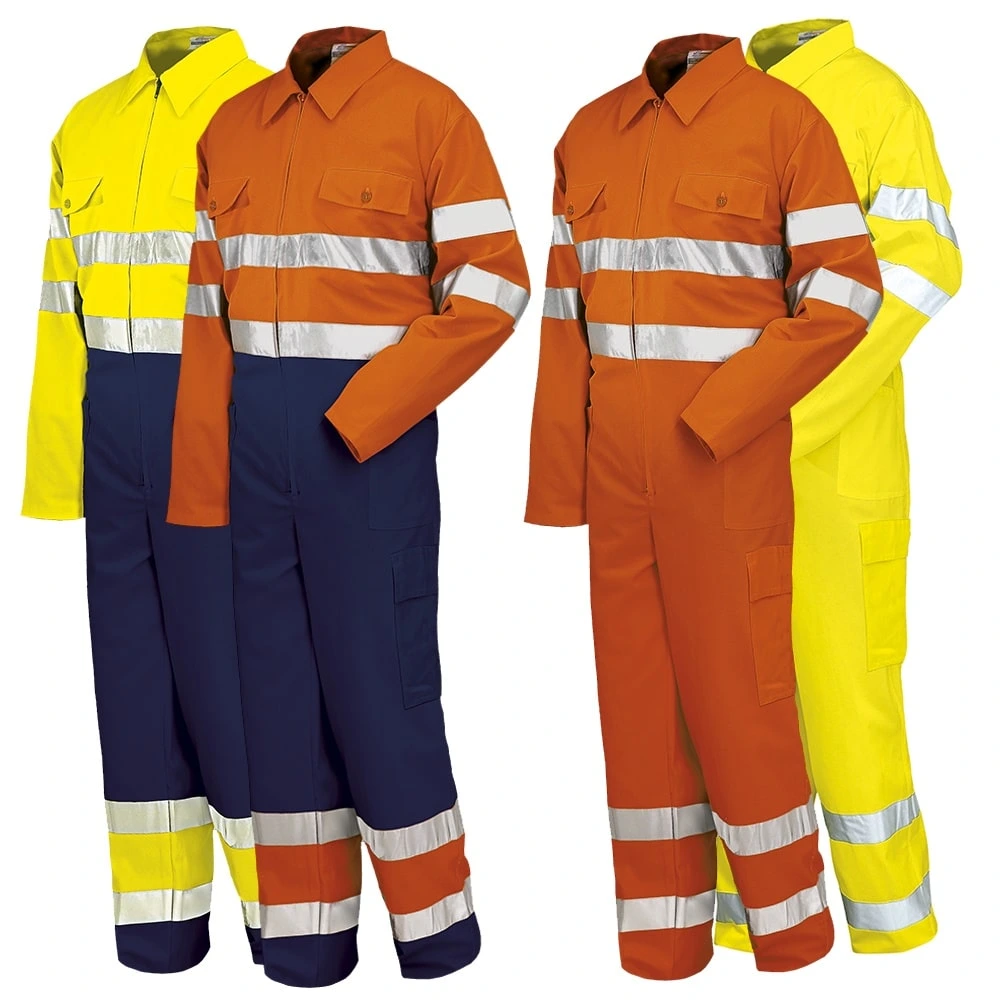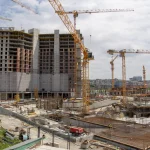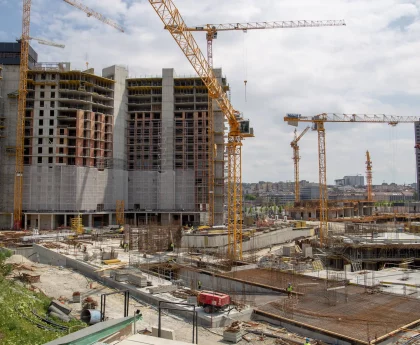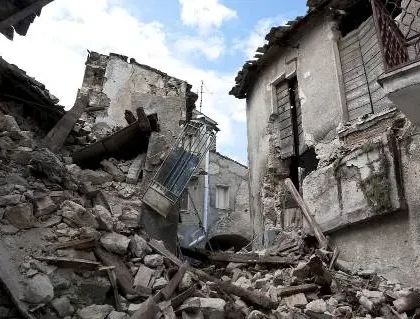Table of Contents
- The legal and moral responsibility of employers to provide workers with necessary safety equipment:
- Some common safety equipment used on construction sites:
- The ways in which employers can help ensure that workers wear the necessary safety equipment:
- How we can help ensure that safety equipment is readily available on construction sites:
- The importance of training workers on the proper use of safety equipment on construction sites:
- How a hardware store can ensure that construction workers have access to high-quality safety equipment on construction sites
Safety equipment on construction sites in Kenya is usually overlooked yet it’s critical in preventing accidents, injuries, and fatalities. According to the Occupational Safety and Health Administration (OSHA), thousands of workers are injured or killed on construction sites every year, and many of these accidents could have been prevented if the workers had been wearing proper safety equipment [1]. For example, hard hats can protect workers from head injuries caused by falling objects or impacts, while safety glasses can prevent eye injuries from flying debris or chemical splashes. Respirators can protect workers from inhaling harmful dust, fumes, and vapors, while gloves and safety shoes can prevent cuts, burns, and punctures.
By providing workers with the proper safety equipment and gear, employers can help reduce the risk of accidents and injuries, thus creating a safer and healthier work environment on construction sites.
The legal and moral responsibility of employers to provide workers with necessary safety equipment:
Employers have a legal and moral responsibility to provide workers with the necessary safety equipment on construction sites. According to OSHA, employers are required to provide workers with personal protective equipment (PPE) that is appropriate for the hazards present on the job site. Employers must also ensure that the PPE is properly maintained and replaced as necessary to ensure its effectiveness [1].
Failure to provide workers with the necessary safety equipment can result in serious consequences for both employers and employees. Employers can face fines and legal penalties if they are found to be in violation of OSHA regulations regarding PPE. In addition, workers who are injured due to the lack of proper safety equipment may be entitled to workers’ compensation or may be able to pursue legal action against their employer [2].
Beyond the legal requirements, providing workers with the necessary safety equipment on construction sites is also a moral responsibility for employers. Workers have the right to a safe and healthy work environment, and it is the responsibility of employers to take steps to ensure that this right is protected. By providing workers with the necessary safety equipment and gear, employers can demonstrate their commitment to the well-being of their employees and create a positive and productive work environment on construction sites.
Some common safety equipment used on construction sites:
Common safety equipment used on construction sites includes hard hats, safety glasses, earplugs, respirators, gloves, and safety shoes. Hard hats are crucial piece of equipment that protect workers from head injuries caused by falling objects or impacts. Safety glasses can prevent eye injuries from flying debris or chemical splashes, and earplugs can protect workers from hearing loss caused by exposure to loud noise. Respirators are important for workers who are exposed to dust, fumes, and vapors that can cause respiratory problems, while gloves and safety shoes can prevent cuts, burns, and punctures [1].
The specific type of safety equipment required on a construction site will depend on the hazards present and the tasks being performed. For example, workers who are operating heavy machinery may need to wear high-visibility clothing to ensure that they are easily seen by other workers. Workers who are welding or using power tools, on the other hand, may need to wear a face shield to protect against flying debris. Workers who are working at heights may need to wear a safety harness and lanyard to prevent falls. By identifying the hazards present on a construction site and providing workers with the appropriate safety equipment, employers can help reduce the risk of accidents and injuries and create a safer work environment [2].
It is also important to ensure that safety equipment is properly fitted and maintained to ensure its effectiveness. For example, hard hats should be adjusted to fit the worker’s head properly and should be replaced if they become damaged or worn. Safety glasses should be cleaned regularly and replaced if they become scratched or damaged. Respirators should be cleaned and maintained according to the manufacturer’s instructions, and filters should be replaced regularly to ensure that they are effective at filtering out harmful substances [3].
Providing workers with the appropriate safety equipment on construction sites and ensuring that it is properly fitted and maintained is essential for creating a safe and healthy work environment on construction sites.
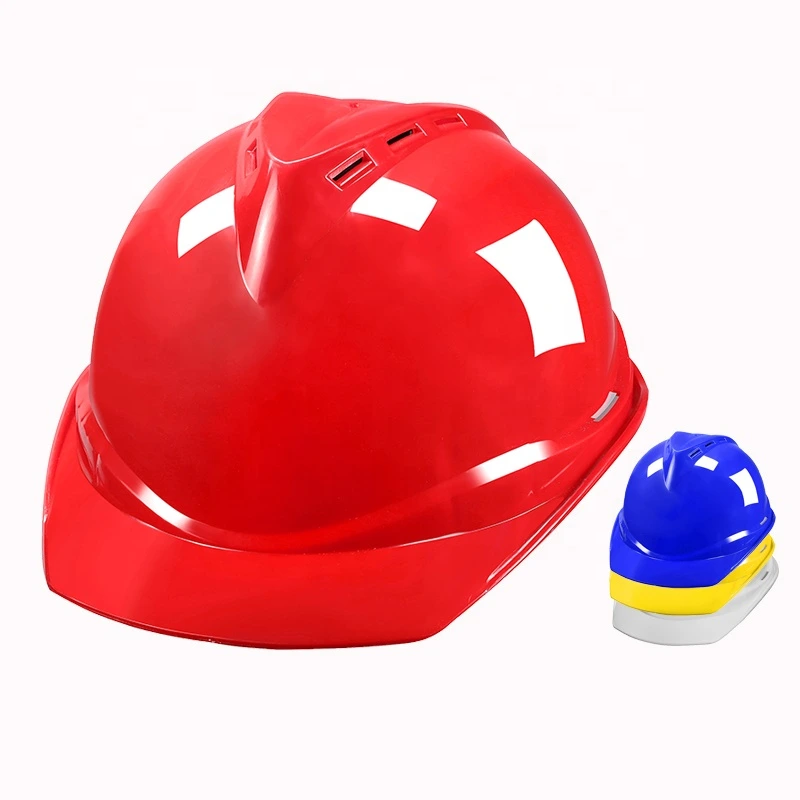
The ways in which employers can help ensure that workers wear the necessary safety equipment:
- Employers can take several steps to help ensure that workers wear the necessary safety equipment on construction sites. One of the most important steps is to provide workers with training and education on the importance of PPE and how to properly use and maintain it. Workers who understand the risks of not wearing PPE and who know how to properly use and maintain it are more likely to wear it consistently and correctly [1].
- Another important step is to enforce PPE requirements through regular inspections and monitoring. Employers should conduct regular inspections of the job site to ensure that workers are wearing the necessary PPE and that it is being used correctly. Employers can also monitor workers to ensure that they are wearing PPE consistently and correctly throughout the workday [2].
- Employers can also incentivize the use of PPE by recognizing and rewarding workers who consistently wear and use it correctly. Rewards can include bonuses, time off, or other forms of recognition. By incentivizing the use of PPE, employers can help create a culture of safety on construction sites and encourage workers to prioritize their own safety and the safety of their colleagues [3].
- Finally, employers can lead by example by wearing PPE themselves and modeling safe behavior on construction sites. When workers see their employers taking safety seriously and prioritizing the use of PPE, they are more likely to follow suit and take safety seriously themselves [4]. Supervisors and managers should also be trained on the proper use and enforcement of PPE. Supervisors should be trained on how to recognize when PPE is not being used properly and on how to intervene to correct the situation.
- Workers should be held accountable for using the proper PPE, and consequences should be established for failing to do so. This may involve disciplinary action or even termination in cases of repeated noncompliance.
- Workers should be encouraged to report any issues or concerns they have regarding PPE use. Employers should establish a system for workers to report concerns without fear of retaliation, and should take these concerns seriously.
- Finally, employers should regularly evaluate their enforcement policies to ensure that they are effective and that workers are complying with them. This may involve conducting periodic audits or surveys to gather feedback from workers.
Ensuring that workers wear the necessary safety equipment on construction sites requires a combination of education, enforcement, incentivization, and leadership from employers. By taking a proactive approach to PPE and creating a culture of safety on construction sites, employers can help reduce the risk of accidents and injuries and create a safer and more productive work environment for everyone involved.
How we can help ensure that safety equipment is readily available on construction sites:
To ensure that safety equipment is readily available on construction sites, employers can take several steps. First, employers should conduct a hazard assessment to identify the types of PPE that are necessary for each job and each hazard. This assessment should be conducted in collaboration with workers and should take into account the unique needs and challenges of the job site [1].
Once the necessary PPE has been identified, employers should provide workers with easy access to it. This may involve setting up a PPE storage area on the job site or providing workers with PPE kits that contain all of the necessary equipment for a particular job. It is important that the PPE be easily accessible and that workers know where to find it when they need it [2].
Employers should also ensure that the PPE provided to workers meets the necessary safety standards and is properly maintained. This may involve conducting regular inspections of PPE to ensure that it is not damaged or worn, replacing PPE that has reached the end of its useful life, and providing workers with instructions on how to properly maintain and care for their PPE [3].
In addition, employers can work with suppliers and manufacturers to ensure that the PPE they provide is of high quality and meets the necessary safety standards. Employers should research different suppliers and manufacturers to find those that offer high-quality, reliable PPE that is tailored to the needs of their particular job site [4].
Ensuring that safety equipment is readily available on construction sites requires a combination of planning, organization, and collaboration between employers, workers, and suppliers. By taking a proactive approach to PPE and making it easy for workers to access the equipment they need to stay safe on the job, employers can help reduce the risk of accidents and injuries and create a safer and more productive work environment for everyone involved.
The importance of training workers on the proper use of safety equipment on construction sites:
It is not enough to simply provide workers with safety equipment on construction sites – they must also be trained on how to use it properly. Proper training is essential to ensuring that workers know how to use the equipment correctly and that they understand the importance of doing so.
The training should cover the types of PPE that are necessary for each job and each hazard, as well as how to properly put on, adjust, wear, and remove the equipment. Workers should also be trained on how to properly care for and maintain their PPE and how to recognize when the equipment needs to be repaired or replaced.
The training should be conducted in a language and manner that workers can understand. This may involve using pictures or diagrams to demonstrate proper equipment use or providing written instructions in multiple languages.
Training should be provided not only to new workers, but also to experienced workers who may be using new or unfamiliar equipment. Refresher training should be provided on a regular basis to ensure that workers maintain their knowledge and skills.
It is also important to ensure that workers understand why the PPE is necessary and the consequences of not using it properly. Workers should be trained on the hazards that are present on the job site and the risks that they face if they do not use the proper PPE. This can help motivate workers to use the equipment correctly and to take safety seriously.
Finally, employers should regularly evaluate their training programs to ensure that they are effective and that workers are retaining the information they need to stay safe. This may involve soliciting feedback from workers or conducting periodic assessments to test workers’ knowledge and skills.
Training is a critical component of any PPE program. By providing workers with the knowledge and skills they need to use safety equipment properly, employers can help ensure that workers are protected from harm and that the job site remains safe and productive.
How a hardware store can ensure that construction workers have access to high-quality safety equipment on construction sites
Hardware stores play a critical role in providing construction workers with the safety equipment they need to stay safe on the job site. By stocking a wide range of high-quality safety equipment, hardware stores can help ensure that workers have access to the equipment they need to protect themselves from hazards.
In order to ensure that the equipment they provide meets industry standards, hardware stores should work with reputable suppliers who provide equipment that meets or exceeds industry standards. This may involve conducting research on suppliers and the equipment they provide, and working with suppliers who have a track record of providing high-quality equipment.
Hardware stores should also make an effort to educate their customers on the importance of using proper safety equipment on construction sites and how to select equipment that is appropriate for the hazards present on their job site. This may involve providing informational materials or conducting training sessions on the proper use of safety equipment.
Additionally, hardware stores can work with construction companies to provide bulk orders of safety equipment at a discounted rate. This can help make safety equipment more affordable for construction companies and encourage them to prioritize safety on the job site.
Finally, hardware stores can also provide repair and maintenance services for safety equipment, which can help extend the lifespan of the equipment and ensure that it is always in good working condition.
Overall, hardware stores can play a critical role in ensuring that construction workers have access to high-quality safety equipment on construction sites that meets industry standards. By working with reputable suppliers, educating customers, and providing bulk orders and repair services, hardware stores can help construction companies prioritize safety on the job site and create a safe and productive work environment.

